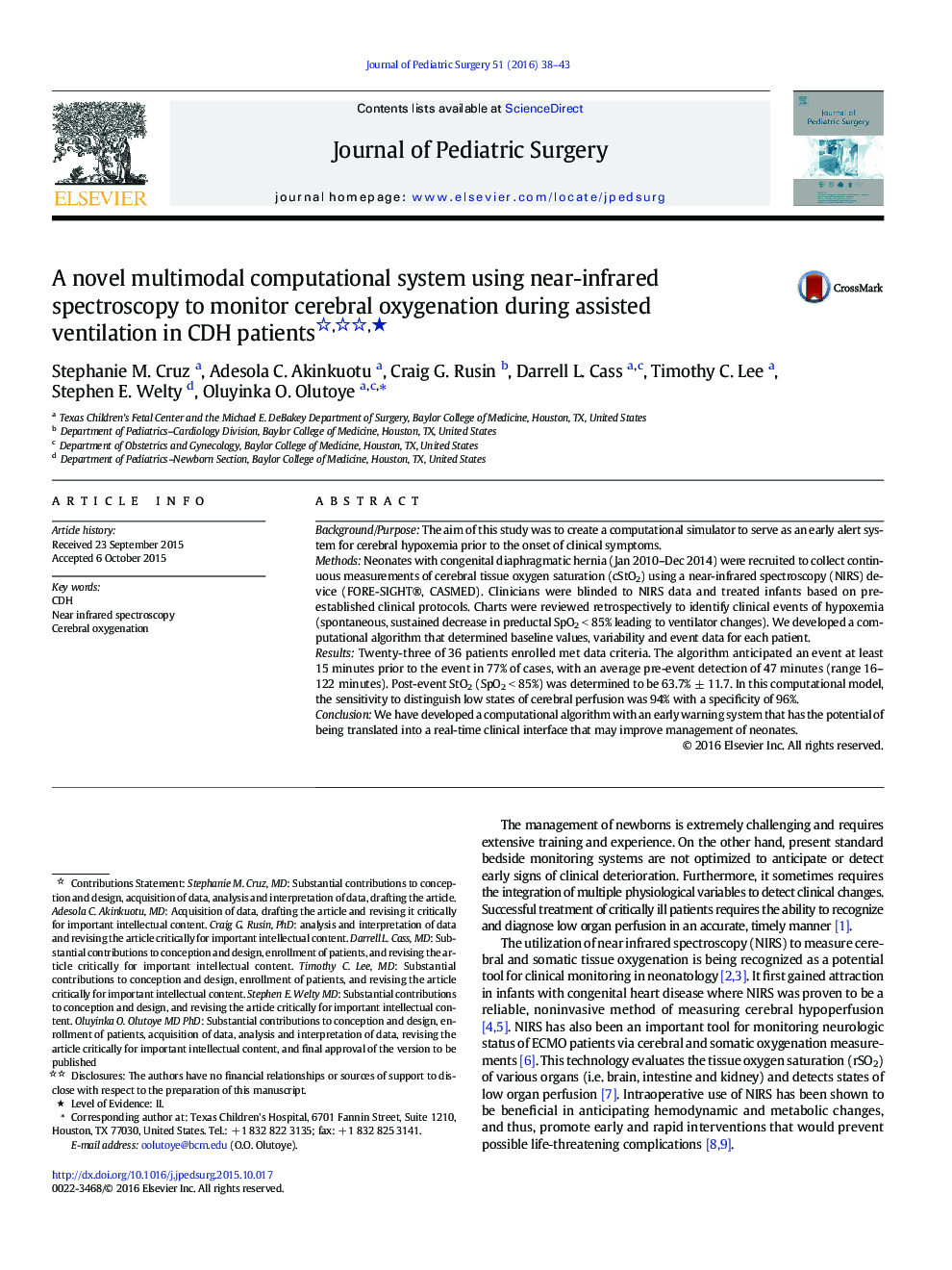| کد مقاله | کد نشریه | سال انتشار | مقاله انگلیسی | نسخه تمام متن |
|---|---|---|---|---|
| 4154862 | 1273729 | 2016 | 6 صفحه PDF | دانلود رایگان |

Background/PurposeThe aim of this study was to create a computational simulator to serve as an early alert system for cerebral hypoxemia prior to the onset of clinical symptoms.MethodsNeonates with congenital diaphragmatic hernia (Jan 2010–Dec 2014) were recruited to collect continuous measurements of cerebral tissue oxygen saturation (cStO2) using a near-infrared spectroscopy (NIRS) device (FORE-SIGHT®, CASMED). Clinicians were blinded to NIRS data and treated infants based on pre-established clinical protocols. Charts were reviewed retrospectively to identify clinical events of hypoxemia (spontaneous, sustained decrease in preductal SpO2 < 85% leading to ventilator changes). We developed a computational algorithm that determined baseline values, variability and event data for each patient.ResultsTwenty-three of 36 patients enrolled met data criteria. The algorithm anticipated an event at least 15 minutes prior to the event in 77% of cases, with an average pre-event detection of 47 minutes (range 16–122 minutes). Post-event StO2 (SpO2 < 85%) was determined to be 63.7% ± 11.7. In this computational model, the sensitivity to distinguish low states of cerebral perfusion was 94% with a specificity of 96%.ConclusionWe have developed a computational algorithm with an early warning system that has the potential of being translated into a real-time clinical interface that may improve management of neonates.
Journal: Journal of Pediatric Surgery - Volume 51, Issue 1, January 2016, Pages 38–43